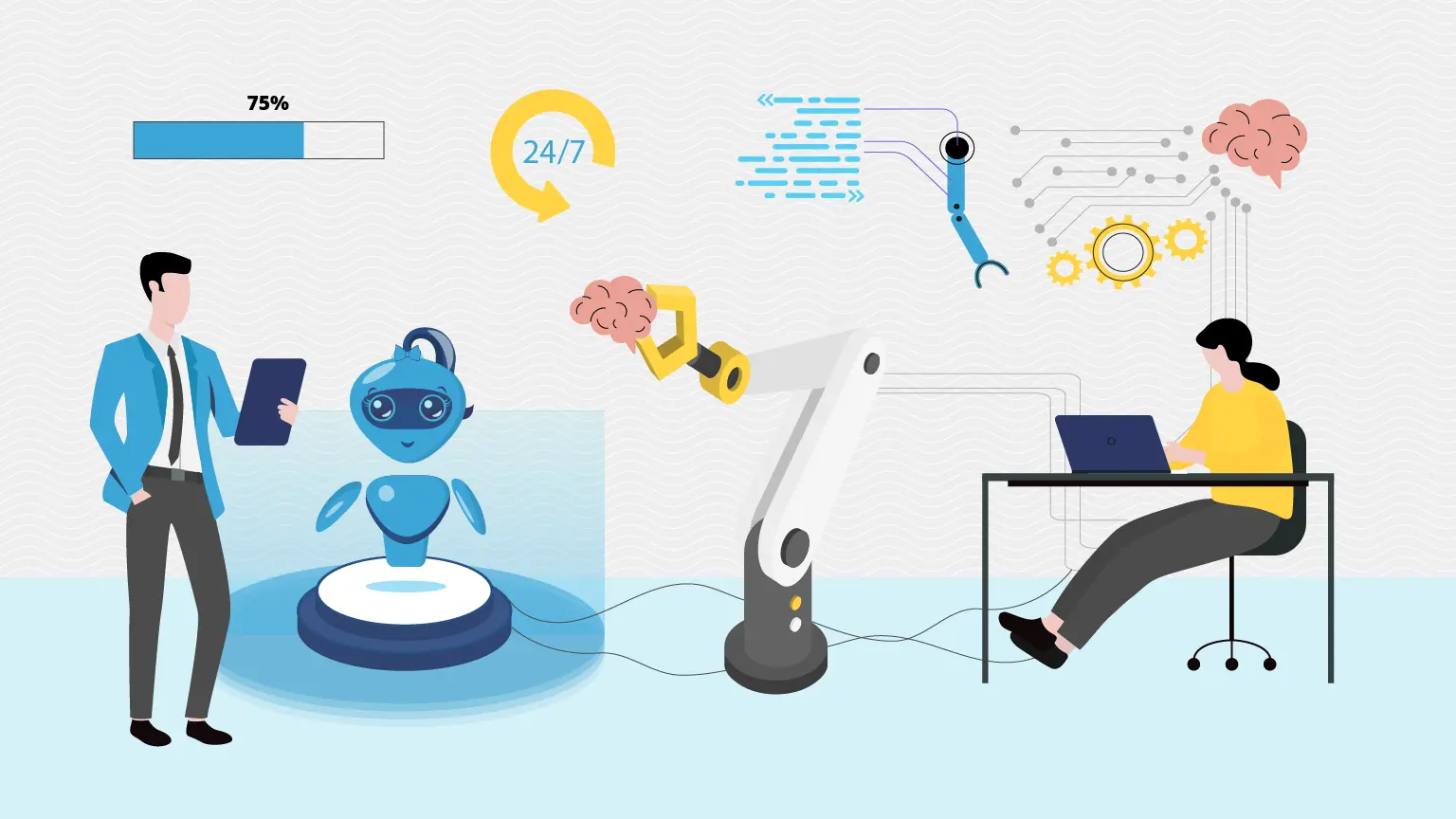The Emergence of AI in Helpdesk: How to Mesh Human Connection with Automation
Artificial Intelligence (AI) has revolutionized the helpdesk world at a breakneck pace, bringing about a new era of efficiency, scalability, and evidence-based decision-making. With automation growing smarter, however, the timeless value of human empathy and contextual problem-solving cannot be replicated. The future of helpdesk support rests in getting the balance right- embedding AI to automate operations while retaining the human element that fosters trust and loyalty.
The Evolution of Helpdesk: From Manual to Hybrid
Historically, helpdesks used human agents to answer each customer’s question, from password recovery to advanced troubleshooting. This human-based model, though intimate, tended to create lengthy response times and variable service during high volumes. AI through chatbots, virtual assistants, and predictive analytics is transforming this model by enabling automated routine tasks and instant answers to frequently asked questions.
AI-powered tools now perform ticket routing, classification, and even elementary troubleshooting, leaving human agents to work on issues that call for empathy, critical thinking, and ingenuity. This is not merely a matter of cost-cutting or increased efficiency; this is about raising the level of customer engagement.
The Advantages of Using AI in Helpdesk Operations
1. 24/7 Availability and Instant Response
AI-powered chatbots and virtual assistants can engage with customers around the clock, providing immediate answers to frequently asked questions and resolving simple issues without human intervention. This reduces response times and ensures customers are never left waiting, especially during off-hours or high-volume periods.
2. Improved Efficiency and Scalability
Automation also simplifies processes by taking care of mundane tasks like ticket triage, password resets, and status updates. This enables support teams to support bigger amounts of queries without adding more headcount, allowing them to scale more easily as the business scales.
3. Data-Driven Insights
AI systems process huge volumes of customer information in real-time, extracting trends, shared pain areas, and proactive support opportunities. These are used to drive product enhancements and allow for more tailored customer experiences.
4. Increased Accuracy and Consistency
Robotic systems operate according to predetermined procedures, making sure each customer gets precise and consistent information. This minimizes human error and assists in the maintenance of high standards of service.
The Human Touch: Why It Still Matters
Despite these advancements, the human element remains essential in customer support. AI, while efficient, lacks the emotional intelligence and nuanced understanding needed to handle complex or sensitive situations. Customers often seek reassurance, empathy, and creative problem-solving qualities that only human agents can provide.
Complex Problem-Solving
Whereas AI can quickly solve simple problems, more complex ones usually need human judgment, flexibility, and subject-matter expertise. Human agents have the freedom to think outside the box and customize solutions to individual customer requirements.
The Power of Human-AI Collaboration
The best helpdesk models integrate the advantages of both AI and human agents, producing a hybrid that offers speed, efficiency, and empathy. Here, AI is the first line of support, addressing routine questions and gathering context-specific information. When a problem needs greater understanding or a personal approach, the dialogue is passed on to a human agent with ease.
Real-World Examples
E-commerce: AI chatbots take care of order tracking and returns, with human agents dealing with complicated refund requests or policy exceptions. This minimizes waiting time and provides individualized attention for more complicated cases.
Banking: Virtual assistants respond to account inquiries, but fraud detection or confidential financial deliberations are forwarded to human experts, blending speed with trust and security.
Healthcare: AI makes appointments and offers basic information, but medical questions or emotional discussions are handled by professionals.
Best Practices for Combining AI with Human Touch
To achieve the full potential of both automation and human skills, organizations must implement the following practices:
1. Design Seamless Handoffs
Ensure transitions between human and AI agents are smooth and transparent. Customers must be supported at every step, with transparency around who is addressing their issue and why.
2. Invest in AI Training for Agents
Train support staff so that they can use AI tools properly. Agents must know how to decode AI-provided insights and utilize them to make customer interactions more effective.
3. Personalize Interactions
Employ AI to capture customer information and context, allowing agents to present contextualized solutions and suggestions. Personalization builds stronger bonds and enhances satisfaction.
4. Ongoing Monitoring and Refinement
Assess performance metrics-respond times, resolution ratios, and customer comments a regular basis to spot areas for improvement. Utilize these findings to get better both AI algorithms and human training programs.
5. Have Human Supervision
While automation is capable of executing many tasks, human supervision is vital for quality and ethical decision-making. Provide agents with the ability to override AI suggestions if needed.
The Future: A Balanced, Adaptive Framework
Empirical research and business case studies all indicate that hybrid human-AI systems are more efficient, accurate, and satisfactory to customers compared to fully automated and fully human-driven models. IBM, Amazon, and Delta Airlines are just a few companies that have seen notable response time and customer experience improvement after implementing this partnership approach.
As artificial intelligence technologies improve, the emphasis will shift from replacing human beings with machines to enhancing their abilities. Helpdesk support of the future is not about deciding between automation and empathy- it’s about combining the two to build an experience that’s fast, reliable, and thoroughly human.
Conclusion
AI growth in helpdesk support isn’t a threat to the human element- it’s a chance to reimagine it. By streamlining tasks and equipping agents with data-driven insights, companies can provide quicker, more effective service without losing empathy or personal touch. The recipe for success is an elegant balance of AI speed and scalability with the imagination and sensitivity of human agents’ collaboration that raises the bar on customer support in 2025 and beyond.


